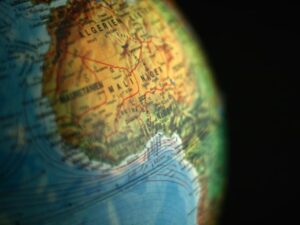Since man first penetrated Earth’s atmosphere, a slew of garbage has been piling up in Near Space. The majority of the junk up there is from space shuttles. Heiner Klinkrad, a European Space Agency (ESA) space expert estimates there to be about 27,000 objects in orbit, travelling 80 times faster than a passenger jet, and that number grows, daily.
The question is, how do we get this stuff down before the clutter becomes a problem?
According to scientists, nets, harpoons and suicide robots could be the weapons used in the fight against junk. Klinkrad said at a space conference on space debris in Darmstadt, Germany:
Whatever we do is going to be an expensive solution. But one has to compare the costs of what we are investing to solve the problem as compared to losing the infrastructure that we have in orbit.
Each object that is flying in orbit has the potential to seriously damage or even destroy satellites. The size of the object does not matter, as even a 1mm piece of debris could result in making a space instrument useless. According to Thomas Schildknecht, an astronomer at the University of Bern, Switzerland, the idea of sending a satellite into space to collect all the debris, with either nets or harpoons is possible.
Among the other options are satellites firing electrically charged atoms, or ions directly at the debris to slow it down over time and eventually bring it back to Earth. There is currently an 8,100kg object, Envist that broke down and is flying around space.
To combat this, a suicide robot could be sent into spcae to bring the satellite back to Earth. But these types of missions would cost anything upwards of $200 million (R1,8 billion) each. The clean up, according to ESA needs to happen soon due to the build up of debris in space.
In 2007, China’s military shot down one of the country’s broken weather satellites as a display of their force. But that show of force led to thousands of pieces of debris now flying in orbit in space. Klinkrad said ten large pieces of debris need to be collected every year in order to prevent the Kessler Syndrome, where colissions of larger objects lead to more debris orbiting in space.
[Source: Sydney Morning Herald]





